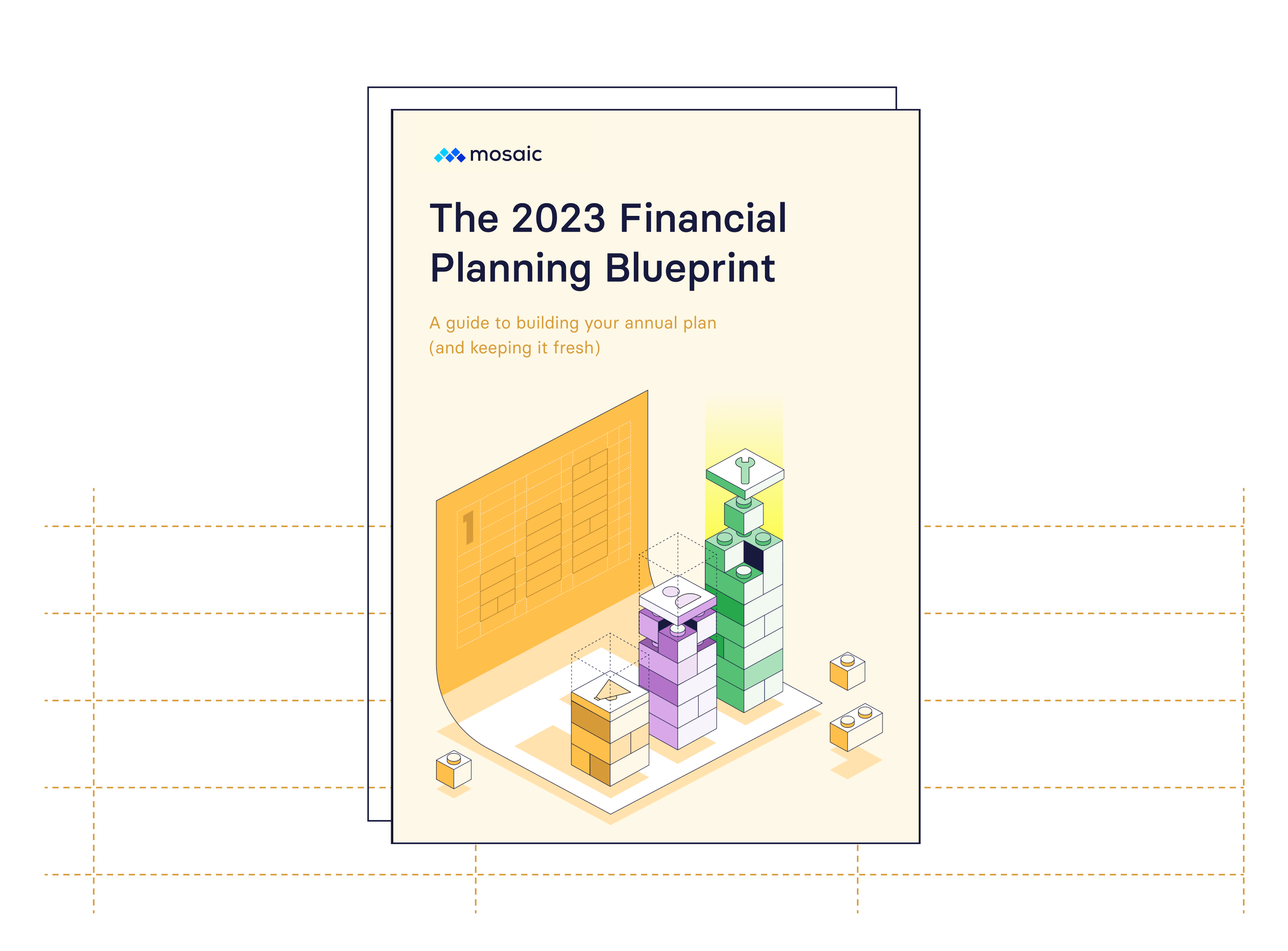Finance sits at the intersection of all business data. Historical data provides a look at the past and sets a precedent for the present as finance teams work through each income statement for top-line vs. bottom-line growth.
But forecasting future revenue growth, expenses, and cash flow isn’t always as simple as carrying historical trends forward. To get an accurate view of your runway and cash burn, you need a spend forecasting and balance sheet forecasting process that weaves together more nuanced drivers and financial assumptions.
The better you can predict future spend and sync your planning and forecasting efforts, the more valuable your finance team will be to department leaders in strategic conversations as the business adapts to new demands throughout the year.
Table of Contents
What Is Spend Forecasting?
Spend forecasting looks at a company’s expenses to determine the cash burn at a certain point or time period. But it’s also much more than that: It’s a bridge between the past and future.
Spend forecasting tracks the following metrics that have to do with a company’s total expenses:
- Expenses by department
- Total headcount
- Expenses as a percent of revenue
- Financial efficiency metrics — particularly customer acquisition cost (CAC) and LTV:CAC ratio
Companies with physical products spend money on machinery and need to focus on things like procurement costs and supply chain management. But for SaaS businesses, their spend focuses on people and the supplies the people need to conduct their business.
The Importance of Spend Forecasting
In VC-backed companies that are pushing to grow at all costs, spend forecasting is important for its ability to create benchmarks for your growth trajectory.
It’s less about trying to predict every single line item that you’ll eventually find on your balance sheet and more about understanding cash impact as you grow — and that means headcount planning has to be attached at the hip with spend forecasting. Because your people make up the majority of your spend, headcount planning dictates how quickly you can grow.
If you’re trying to maximize revenue growth, you’re going to start planning out investments in your sales team — which requires hiring and training sales representatives. These expenses count toward a percent of revenue, as you need to consider how much in new revenue you bring in for every dollar spent on sales and marketing. You’ll also keep an eye on the sales rep ramp to then predict future headcount and spend to continue the company’s growth cycle.
Another layer for spend forecasting and forward-looking insights relies on conducting market research. What public companies have hit similar benchmarks and growth rates? Looking at their numbers, you can apply their growth cycles to your forecasting models and see what would be necessary to achieve their benchmarks.
Spend Forecasting Methods
It’s impossible to think about spend forecasting methods in a vacuum, isolated from your budgeting processes and approach to revenue forecasting. There are two high-level approaches you could take to your overall planning.
There’s the top-down budgeting method where budgets and revenue goals come down directly from leadership to department leaders. In these cases, finance becomes the bridge responsible for keeping the company accountable.
Then, there’s the bottom-up method where department-level planning rolls up to the overall company revenue goals and budget. Think of how something like a bottom-up sales capacity model impacts your spend forecasting. You map out the number of sales reps you’ll need to hire to hit revenue goals, which is the first domino in projecting headcount expenses from a salary and commissions perspective.
Once you have those revenue goals nailed down and a sales capacity model in place, you can start using different forecasting methods for your other expenses, including:
- Per-month forecasting. There are certain line items you’ll want to forecast on a per-month basis. These are consistent, known expenses such as the depreciation and amortization of hardware.
- Per-head forecasting. Other line items tie directly to your headcount plans. For example, you can forecast laptop purchases based on new headcount because you know you’ll spend $1,500 on that new computer for every employee you hire.
- Net-zero forecasting. You can use the net-zero forecasting method when flux analyses show you that historical data and trends are lumpy for certain line items. For example, you may want to forecast accounts payable based on percentages of accounts you funnel through AP. Use a three-month rolling average when doing this to create consistency in your forecast.
These are just a few of the different ways you can build the logic behind your spend forecasts. The real key to success is determining the drivers in your business and building spend forecasts off of those key elements of your operations.
Create More Accurate Spend Forecasts with Real-Time Data
What Are Some of the Most Important Spend Forecasting Factors?
If you’re a SaaS business, it’s impossible to overstate the influence of headcount metrics on any spend forecasting. But even in SaaS, there are additional factors beyond headcount that impact balance sheet forecasts and dictate how you project expenses in your business.
Cost of Revenue
SaaS cost of revenue is the hosting costs for the company’s software on platforms like Amazon Web Services, Google Cloud, and Microsoft Azure. Depending on the platform, companies pay on a subscription or usage-based model. These costs are built into the SaaS pricing strategy.
Prepaid Expenses
Prepaid expenses include rent, taxes, software, legal retainer services, and other costs.
Variable Components
As a company grows, commission planning and forecasting become imminently important. A lot of commission plans may have accelerators that motivate salespeople to close. Accelerators compound throughout the year, so companies will most likely be paying more commissions in Q4 than Q1.
Marketing most likely has variable components due to campaign costs. While marketing may remain on budget, it’s important to consider social media initiatives (like giveaways) and have the marketing department investigate, “How much should you spend on ads to drive revenue growth (and remain within the forecasted budget)?”
Another variable considers travel & expenses (T&E). Any reimbursements, such as company lunches, office stipends, or travel expenses, will vary depending on individual or department needs.
Vendors and Contractors
Each department requires different software and platforms to perform its duties: Sales has Salesforce, while marketing uses HubSpot for analytics. Departments, such as marketing, may require assistance from freelance writers, who potentially have various contracts and fees.
How to Use Spend Forecasting to Reduce Costs
Spend forecasting helps optimize short-term spending — not just to cut costs, but to ensure the business is investing in projects and processes that help track toward overarching company goals. And in the long term, forecasting spend can help increase financial efficiency, extend runway, and build a culture of financial business intelligence across the company.
Evaluate Spend by Vendor, Software, and Contractor
Breaking department budgets into their individual expenses empowers departments to own spend management, giving them visibility to review their vendors, software, and contractors. With this knowledge, they can determine whether they would like to switch to other, less expensive software or cancel any subscriptions for software that’s not in use.
Identify Spending Patterns
Finance knowing when company trips and events are occurring allows them to factor them in for more accurate rolling forecasts. It can also help departments, like marketing, ensure that they remain within budget (or adjust the budget to accommodate necessary spend).
Optimize Headcount for Revenue Growth
As runway correlates with revenue growth, the company has to decide when optimal times will be to hire for particular departments. Finance is able to factor in depreciation, amortization, and other balances based on headcount.
There will be initial costs with hiring. But knowing when hiring makes sense to optimize new employee ramp cycles toward full production will ensure they’re ready for any seasonality within the business, which helps the company capitalize on opportunities for revenue growth.
How Mosaic Can Help Your Business with Spend Forecasting
As an industry, finance has been left behind in regard to tool and process optimization. But Mosaic offers many cost savings opportunities in regards to time and efficiency for finance teams.
Forecasting spend in Excel, Google Sheets, or sub-par business budgeting software can take hours to complete, and is susceptible to human error and issues with version control. Old formulas and miscommunication between departments and stakeholders on budget could also create long-term impacts on misinformation, which needs additional time to trace and resolve.
Mosaic is a Strategic Finance Platform that offers forecasting tools and powers them with real-time data so you can focus more on pulling levers in your business. The power of Mosaic is that it comes with pre-set forecasting methods and data visualizations that you can break out into various timelines and specializations.
Do you want to base your headcount model off of salary? Or have it on a per-head basis? What about digging into benefits?
While all of this work is possible to accomplish in spreadsheets, Mosaic allows you to dig into these questions with real-time accuracy and powerful automation that takes on the busier work of creating formulas to build out scenario analysis examples that provide multiple views of your spend forecast. You gain back hours of time to collaborate with department leads, dig deeper into the numbers, and make more impactful insights that lead to more strategic decision-making.
Schedule a personalized demo to learn more about Mosaic’s approach to planning that saves you time and prolongs the company’s runway toward successful spending with company growth optimization in mind.
Own the of your business.


